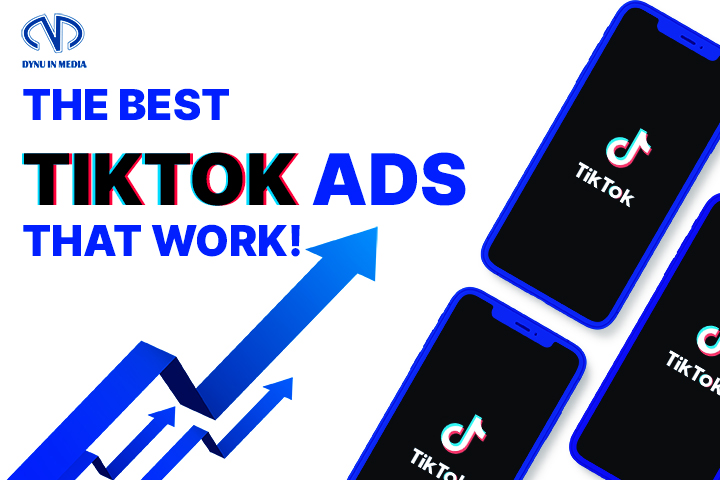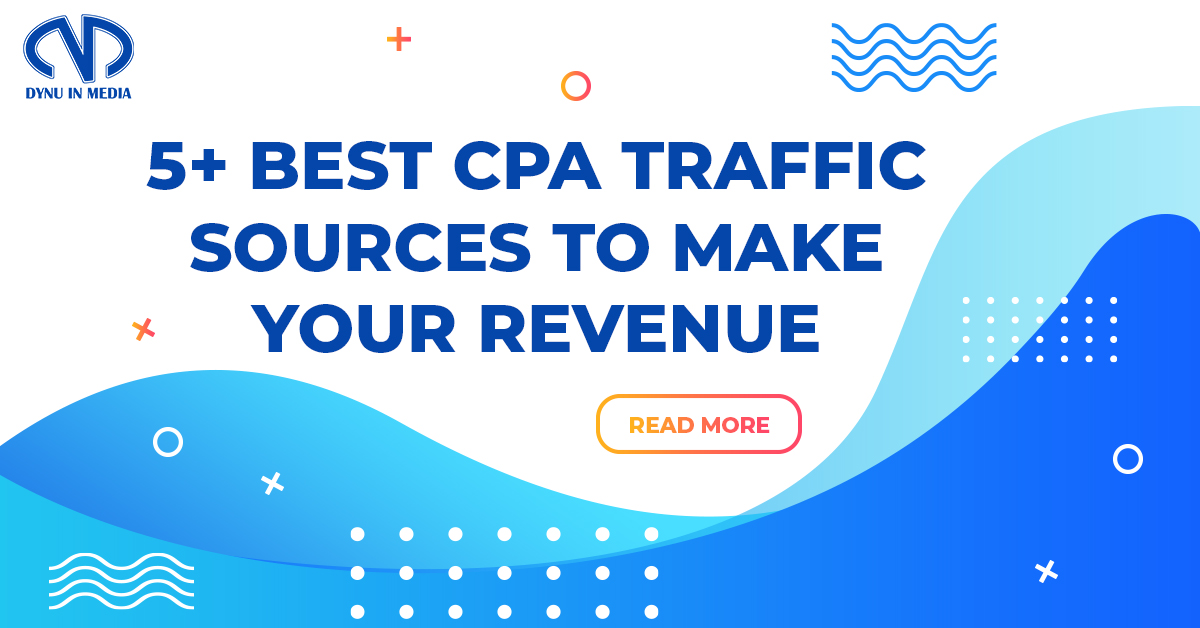What Is Ad Network? How Does It Work? [2023 update]
Stop for a second! I want to ask you a question: What is ad network? Can you tell me the exact definition of it? In fact, many affiliate marketers still cannot answer this question in a few seconds. If you are one of them, let’s come up with Dynu In Media. We help you get the scoop on Ad Networks and how they can help your business.

What Is Ad Network?
Firstly, find out what the ad network is. To put it simply, an ad network is a digital system that mediates transactions between advertisers and publishers. In the mid-1990s, when online advertising first began, ad networks were one of the earliest forms of advertising technology to emerge. Helping advertisers purchase inventory (ad space) from multiple publishers was a primary function, much like it is today.
Despite the fact that the term “ad network” is commonly used to refer to online advertising, it does not include other forms of media, such as print, broadcast, or even electronic media.
Ad Network vs Affiliate Network: What is the Difference?

Are you confused about ad network vs affiliate network? Let’s dive into the details below, and we will help you separate each definition to help you see the difference:
- Affiliate networks function as a type of marketplace in which advertisers post a large number of offers in the hopes of finding affiliate marketers willing to promote those offers in exchange for a commission.
- An ad network is a meeting place for advertisers (also known as merchants) and publishers (aka webmasters). The first type visits looking for abundant good site visitors. The latter group is responsible for generating foot traffic.
4 Types of Ad Networks
The next thing we want to show you is four types of ad networks. Are you curious about them? Here are four main types you need to bear in mind if you want to join an ad network:
- Inventory-specific networks: Specialized ad networks that supply only mobile or video ads.
- Vertical networks: Ad networks that cater to a particular industry, like the clothing industry, the car industry, or the business world.
- Targeted networks: Networks of ads targeting users based on their interests and demographics using data collected by the ad server.
- Premium networks are providers of advertising space on behalf of well-known publishers.

How Does Ad Network Work?
Understanding how ad networks work can help you control the game-changing in affiliate marketing. The traditional model works follows the process below:
- Step 1: Ad networks compile inventory from numerous publishers.
- Step 2: The advertiser, meanwhile, uses the campaign panel provided by the ad network to launch an advertising push. The advertiser specifies the campaign’s budget, targeted audience, and other parameters during the creation process.
- Step 3: The publisher is responsible for implementing the ad network tags on their site.
- Step 4: Advertisers only pay when their campaigns are a good match for a publisher’s inventory. The ad network makes money by either keeping a percentage of the ad revenue or by setting a higher price for the inventory it sells.
- Step 5: The advertiser can monitor and adjust the ad’s performance in the campaign panel of the ad network once it has gone live.
Why Are Ad Networks Important?
Why are ad networks important? Ad networks are a powerful tool for both advertisers and publishers. Ad networks play a crucial role in the mobile advertising ecosystem as a means of monetization. Simply put, they facilitate the exchange of goods and services between publishers and advertisers.
Supply-side integrations to offer inventory and demand-side integrations to activate and track campaigns are commonplace on the technical level. Ad networks serve as a go-between for monetary exchanges in the business world. Publishers would have to bargain with each potential advertiser without demand-pulling ad network solutions.
What Benefits Do Advertisers And Publishers Get From Ad Networks?
Let’s take a look at the benefits that ad networks bring to both publishers and advertisers.
Advertisers
There are two main benefits for advertisers:
- Adds more potential audiences and publishers. When advertisers specify the demographics of the traffic they wish to receive, it can reduce the variety of impressions they receive.
- By utilizing an ad network, marketers can reach a larger audience for the same cost by tapping into a larger supply of publishers.
- Improves your return on investment. Ad networks use precise matching to help marketers select the most lucrative deals.
Publishers
Aside from benefits for advertisers, here are three main benefits that ad networks can bring to publishers:
- Expand your reach. Ad networks are the ideal approach to obtaining a piece of the increasing app market by monetizing a bigger audience segment. Advertisers restrict the types of audience and traffic they want to receive.
- Fast-earning. You can start making money immediately after your site is ready and you join one or more ad networks. Ad networks are a simple way for publishers to cover expenditures. Ad networks enable publishers to make money quickly and easily, even if operational costs are low.
- Add advertisers. Ad networks serve quality, well-targeted adverts to perform successfully on your site. More “views and clicks” are possible with more ad creatives. This boosts your chances of winning.
Top 8 Best Ad Networks In 2023

Check out the top 8 best ad networks in 2023 we collect and list below:
- BidVertiser
BidVertiser’s monetization approach appeals to publishers. When an ad is clicked, and the advertiser makes a sale, the publisher gets a little extra.
- PopAds
One of the largest pop-under ad networks is PopAds. Pop-under advertising display under active windows for desktop and mobile users. PopAds accepts ads instantly and offers affordable CPM prices. There’s no minimum traffic need, unlike other ad networks.
- Google Adsense
Google Adsense is one of the oldest and largest ad networks. It supports multiple ad types and behavioral targeting. Nonetheless, Google AdSense requires its advertising to meet rigorous standards, so follow the guidelines.
- PropellerAds
PropellerAds is another major ad network. PropellerAds offers display, native, pop-under, and push notifications. Self-Service PropellerAds connects publishers and advertisers. The platform lets you design campaigns and track ads in real-time.
- Adcash
Adcash’s ad formats and solutions enable publishers to monetize traffic. Better yet, their technology bypasses ad blockers. It’s one of the easiest ad networks to use.
- Media.net
Media.net is a popular alternative to Google Adsense. CNN, Forbes, and Esquire are among its best-known publishers. Media.net connects publications to national and local marketers via Bing and Yahoo. The ad network lets advertisers generate contextual advertising for search, native, display, and mobile inventory.
- AdThrive
AdThrive targets lifestyle publishers in travel, food, and fashion. AdThrive’s “creator-first approach” guarantees publishers payouts even if advertisers don’t pay.
- Propel Media
Propel Media handles display and push ads. It’s also a great ad network for high-intent audiences. It matches customer intent with highly relevant content in real-time using intent-based technology.
How To Choose The Right Ad Network?
The right next work is also the key to success in affiliate marketing. Choosing the right ad network doesn’t have to be a chore if you give some thought to the following four things before you start your search.
- Does it offer multiple formats? Try to find an ad network that provides a number of different ad display options, even if you aren’t sure which ones you’ll need. You’ll have the opportunity to put several strategies to the test and adjust as needed.
- Grasp what technologies an ad network offers or can interact with before opting to commit to one: Using programmatic advertising and real-time bidding, publishers can increase their revenue. Before committing to an ad network, it is crucial to learn what technologies it supports or can integrate with.
- Can it compete with RTB or programmatic ads? Due to the programmatic ecosystem’s threat to the sustainability of legacy ad networks, it is crucial for publishers to comprehend the benefits of automated ad buying and selling before seriously contemplating or committing to an ad network.
- How big is the network? More advertisers competing for your inventory means you can charge more for each individual view. While looking for an ad network, it’s important to find one with a large publisher inventory so that advertising may be effectively matched with relevant websites.
Marketers need a thorough understanding of what is ad network and how they can benefit their display, native, and banner advertising campaigns. The right ad network can boost conversions and get ads in front of the right people. And it helps publishers attract advertisers and sell their inventory. However, there are many ad networks to choose from, so make your decision with caution.
If you keep an eye on Dynu In Media, we will become your best companion, help you target the right audience, and generate over-expected revenue. Finally, we always wish you success!








